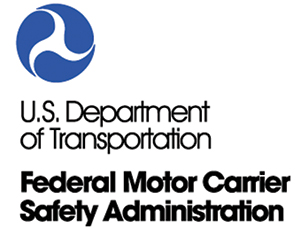Staff Reporter
NHTSA Data Shows Slight Increase in Large-Truck Occupant Fatalities

[Stay on top of transportation news: Get TTNews in your inbox.]
The number of large-truck occupants who perished in traffic crashes increased slightly in 2019, while overall traffic fatalities declined, according to National Highway Traffic Safety Administration data.
NHTSA released a preview of 2019 data from the Fatality Analysis Reporting System on Oct. 1. FARS provides to Congress and the public annual data regarding fatal injuries in motor vehicle traffic crashes. Chou-Lin Chen, NHTSA’s associate administrator for the National Center for Statistics and Analysis, said the full analysis will be released later this year.
While the preview data indicates a general decline in traffic fatalities by person type, there was a 0.2% increase in fatalities of large-truck occupants. Some 892 large-truck occupant fatalities were recorded in 2019, two more than were recorded in 2018. NHTSA notes that large trucks include commercial and noncommercial trucks that weigh more than 10,000 pounds.

“The data provided by FARS does not distinguish between commercial and privately owned trucks, so it is important not to draw conclusions regarding [commercial motor vehicle] crashes,” a Federal Motor Carrier Safety Administration spokesman told Transport Topics. “The agency continues to implement important safety initiatives, like the final rule updating the hours-of-service regulations, important research into new assisted technologies for drivers to improve safety, and the implementation of FMCSA’s Drug & Alcohol Clearinghouse.”
Nationwide, traffic deaths decreased during 2019 compared with 2018, according to NHTSA data. In 2019, there were 36,096 fatalities in motor vehicle traffic crashes. This figure represents a 2% decrease from the 36,835 fatalities recorded in 2018. This trend builds on a decline reflected between 2017 and 2018.
“Fatalities decreased by 2%, which continues the encouraging three-year downward trend,” NHTSA Deputy Administrator James Owens said during a webinar hosted by the agency Oct. 1. “That’s very encouraging news.”

Even though fatalities in traffic crashes decreased, vehicle miles traveled in 2019 increased by 0.9%. The estimated fatality rate for 2019 was 1.10 per 100 million vehicle miles traveled, which is lower than the rate of 1.14 fatalities recorded in 2018.
Additionally, NHTSA released preliminary estimates for traffic-related fatalities during the first half of 2020. The second quarter, when the coronavirus pandemic gripped the country, reflected a decline in overall traffic fatalities. FARS data indicates an estimated 8,870 people died in motor vehicle traffic crashes during the second quarter, a decrease of about 3.3% compared with fatalities recorded in the second quarter of 2019.
In the first six months of this year, total traffic volumes decreased by more than 16%, according to the estimates. Because traffic volumes decreased more drastically than the number of fatal crashes, the traffic fatality rate per 100 million vehicle miles traveled is projected to increase to 1.25 in the first half of 2020, marking a jump from 1.06 recorded during the same period in 2019.
As a companion to the data, NHTSA released two studies Oct. 1 that suggest driving behaviors changed significantly during the height of the public health crisis and related lockdowns. One study found that, during this time, drivers who remained on the roads engaged in more risky behavior, such as speeding, failing to wear seat belts and driving under the influence of drugs or alcohol. Traffic data indicates average speeds increased during the second quarter of 2020. Evidence also suggests fewer people involved in crashes used their seat belts.

Home | Video | Heroes' Photo Gallery
Saluting the men and women of the trucking industry who kept America's essential goods flowing during the coronavirus pandemic.
Heroes: Peter Lacoste | Susan Dawson | James Rogers | Reggie Barrows | Kevin Cooper | Cesar Quintana Moreno
The second study, which examined seriously or fatally injured road users at five trauma centers, found that between mid-March and mid-July, almost two-thirds of drivers tested positive for at least one active drug. The number of such drivers testing positive for opioids nearly doubled after mid-March compared with the previous six months.
“Road safety is always our top priority, and while we are encouraged by today’s reports showing a continued decline in total fatalities in 2019 and into the first half of 2020, we are concerned by the trend since April showing an increased fatality rate,” Owens said. “Now, more than ever, we should be watching ourselves for safe-driving practices and encouraging others to do the same. It’s irresponsible and illegal to drive under the influence of drugs or alcohol, taking risks not only with one’s own life, but with the lives of others.”
In the coming weeks, Owens said NHTSA will meet with state and local government representatives and safety advocates to discuss the data and develop countermeasures.
“We’ve never seen trends like this,” Owens said. “We feel an urgency to work with our stakeholders to take action and turn this around. We faced some unprecedented challenges this year, including in traffic safety.”
Want more news? Listen to today's daily briefing:
Subscribe: Apple Podcasts | Spotify | Amazon Alexa | Google Assistant | More




